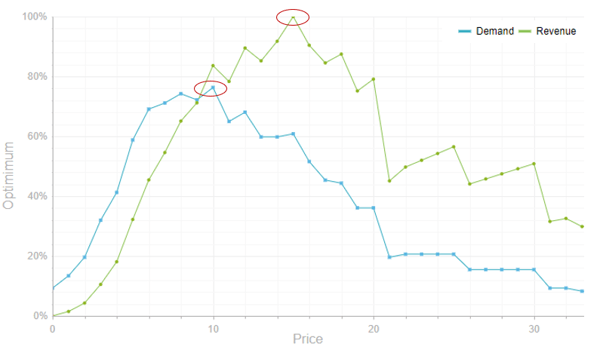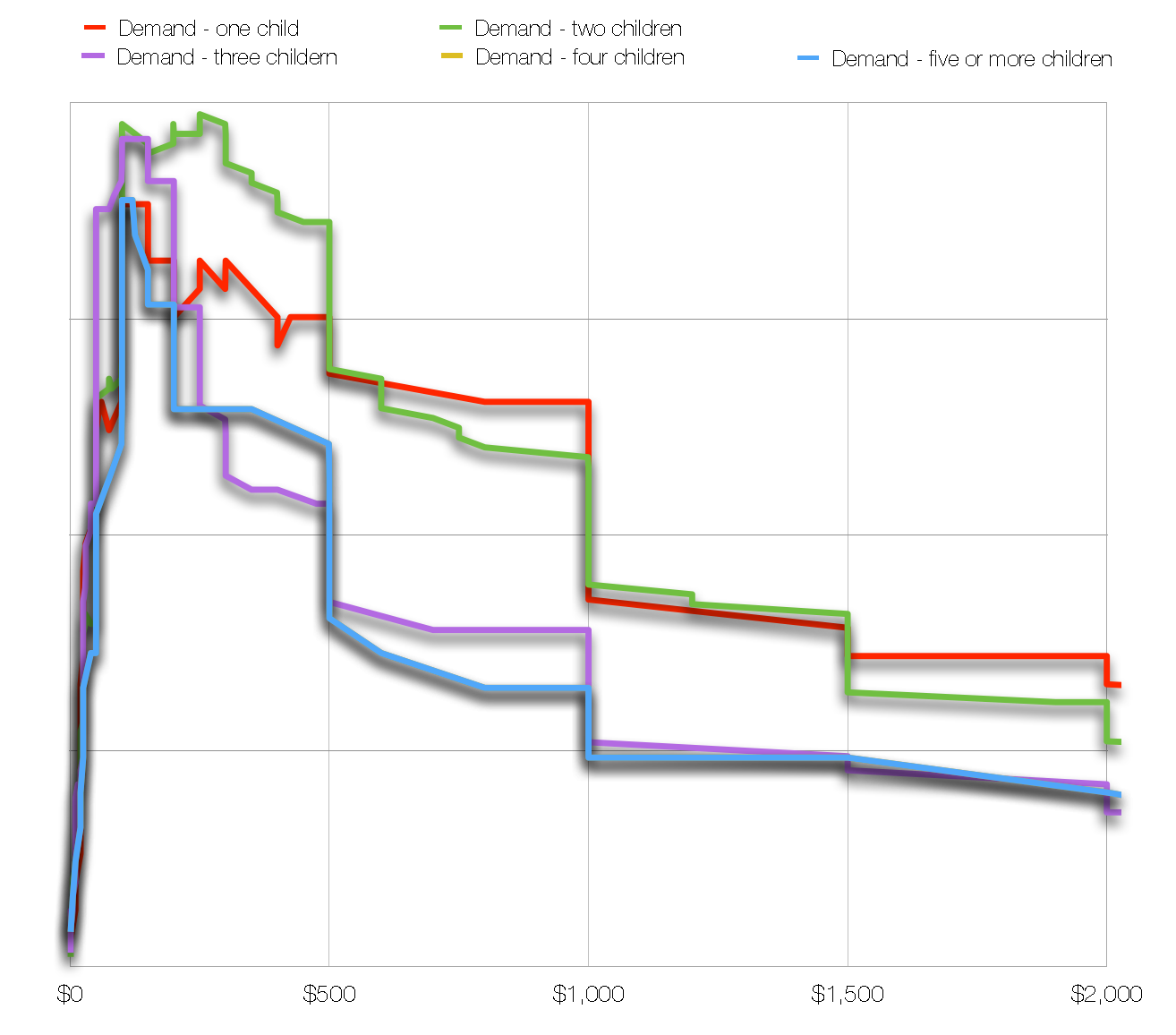Are Your Customers Willing to Pay More?
 PriceBeam
·
4 minute read
PriceBeam
·
4 minute read

Take the Guesswork out of Pricing
Do you have the right price for existing products or services? Do you know what the price should be for a new product yet to be launched? Are your customers willing to pay more for a given set of benefits? If you measure willingness-to-pay scientifically you will be able to answer all of those questions. Yet, still 88% of all companies admit that their pricing process is at least in part based on guesswork, without knowing what customers value and how much they are willing to pay for an overall product, or for a given set of features.
Knowing about willingness-to-pay instead of guessing
In many situations, customers actually ARE willing to pay more, as long as the value delivered is communicated well and properly. But the starting point is to know what the willingness to pay is. This can be done with an analysis like the one below from PriceBeam:

In the above example, the willingness-to-pay analysis has run for one product. The blue curve illustrates the demand (quantity) optimization curve whereas the green illustrates the revenue optimization curve. At the top of each curve is where quantity or revenue respectively would be optimized, based on the measured willingness-to-pay in the market place. In the specific case, the business would sell the most unit if priced around 10 (or 9.99), whereas revenue would be the highest if selling at 15 (or 14.99).
This is actionable insight and works for existing products as well as new products. It can be run for a single product or for a multitude of products. It can be done for different customer segments and thus you can understand willingness-to-pay and optimal price points for different groups of customers. It can even be conducted for competitive products and compared to yours. Using a cloud platform, results can be available in as little as 24 hours and never more than 2 weeks, depending on the type of customers and products.
Price Positioning Decisions & Value-Based Pricing
If you have an existing product or service, in other words have an existing price established, the willingness-to-pay optimization analysis can help understand how far or how close you are to that optimum. Value-based pricing best practice looks at 5 "C"s:
- Comprehend the things the customers value: Begin differentiating from competitors by understanding customers’ needs better than the competitors do. When mastered it is much easier to differentiate and communicate value
- Create value for the customer: Define and design a differentiated offering that addresses the customers’ requirements more effectively than competitors’ solutions can.
- Capture value through effective pricing: Create prices and price structures that accurately depict the value of a product by using knowledge of the product, and its value to the customer.
- Communicate the value: Put together powerful, persuasive value propositions that distinctly communicate value to the customer. Make them recognize that you have taken the time to understand their needs, and create the value that they require
- Convince customers that your value is worth paying for: Confidence is vital in order to convince the customer that the price is right. When the customer inevitably says that the offering is too expensive, instead of immediately giving them a discount, salespeople should be confident and reply, “Well look, when you think about the value that we deliver I would actually go as far as to say not only aren’t we expensive, we’re probably not charging quite enough.”
With the willingness-to-pay analysis you cover multiple C's: The Comprehend is straightforward: you get to understand what value customers put on your product. Capture: it is clear what the optimum price should be. Communicate and Convince: while one doesn't get messaging directly from the chart, if it is clear that current pricing is well below the achievable price (top of the curve), then it does provide confidence once price increases are put through. A relatively large gap between current price and optimum price also should highlight to management that Communication will be an essential component of the change management when starting the price increase process.
Price Increase Decisions
Knowing if your current price is below what customers are willing to pay, and by how much, will always help in price increase situations. In addition to the overall WtP optimization curve there are two additional analyses that will provide valuable input when managing price increases:
1) Willingness-to-pay by customer segment: simply ask some questions about the respondents and thus be able to see different curves for different customer segments. Very often it is the case that some customer (segments) are willing to pay a higher price than others. If you know what those segments are and what they value, then you can enhance your price structure so that you capture more of that value. It can be by bundling services, or differentiating the product or packaging of the product.
2) Willingness-to-pay for competitive offerings: Run the analysis not only for own products but also for some competitive products. The difference in the curves will show when your position is stronger, or weaker, versus the competition.
Customer Segmentation and Product Differentiation
Not all customers have the same willingness-to-pay. It is quite straightforward to simply run the analysis for different customer segments:

In this example one customer segment has a willingness-to-pay curve (red dots) that differs from that of another customer segment (the blue dots). Segment A has an optimal price of 25, whereas Segment B has an optimal price of 15. With this insight, the marketing team can look at how to differentiate the product/service in such a way that both willingnesses-to-pay are captured. Maybe Segment A has a higher appreciation of certain features or a bundled service, thus you can create two differentiated products at two different price points (15 and 25).
Pricing a New Product or Service
Much of the above logic and approach can also be used for pricing new products or services. The advantage of the PriceBeam method is that respondents can be asked equally well about existing products or new concepts. We can even run comparative studies and then compare the WtP curves between an existing product and an about-to-be-launched one. In other words, you could get similar WtP charts for the existing product and then 4-5 concepts. This can help fine-tune product development, where concept boards can be tested for potential willingness-to-pay and thus the optimal price, before launching.
.png?width=400&height=100&name=PBLogoTransparent%20(1).png)



